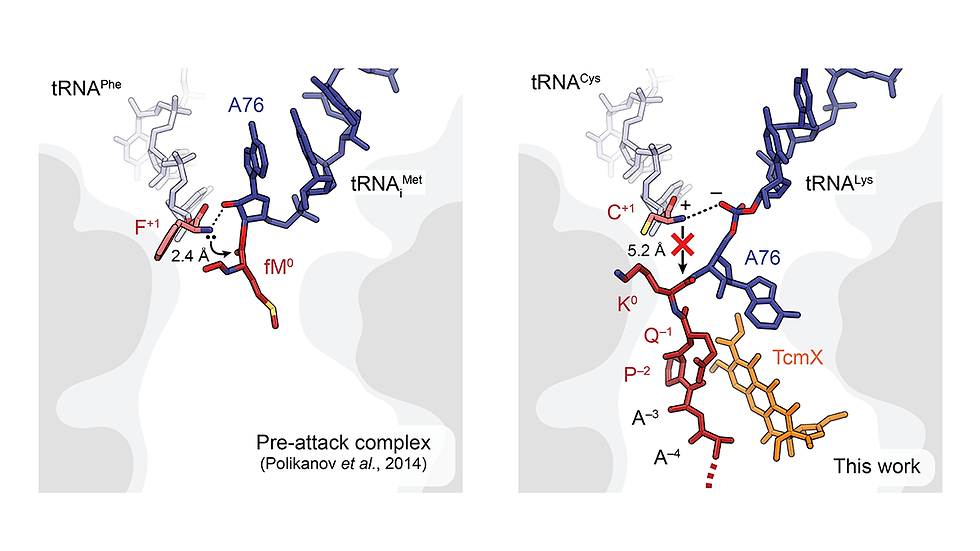TcmX sequesters tRNA at QK motifs
- Axel Innis
- 15 juin 2023
- 1 min de lecture
Dernière mise à jour : 4 janv.
Leroy, E.C., Perry, T.N., Renault, T.T., Innis, C.A. (2023). Tetracenomycin X sequesters peptidyl-tRNA during translation of QK motifs. Nat Chem Biol 19, 1091-1096.
News & Views by Vázquez-Laslop & Polikanov (2023). Nat Chem Biol 19, 1044.
PDB entries: 7ZTA
EMDB entries: EMD-14956
During translation, an almost infinite combination of nascent peptides, tRNAs and mRNAs transit through the ribosome. Since ribosome-targeting antibiotics must operate within this ever-changing setting, many of them are likely to be context-dependent inhibitors of translation.
Here, we used iTP-seq to study the context dependence of TcmX, an aromatic polyketide that binds within the nascent polypeptide exit tunnel of the ribosome. We found that TcmX allows the translation of most sequences, but causes ribosomes to stall when they encounter a QK motif. We therefore biochemically and structurally characterized ribosomes translating QK motifs in the presence of TcmX, and discovered that the drug traps the 3’ end of peptidyl-tRNA inside the exit tunnel with the help of the nascent peptide and the ribosome. This, in turn, disrupts the ability of the ribosome to catalyze peptide bond formation.

In its current form, TcmX is not a very effective antimicrobial. But armed with this new knowledge we can start thinking about ways to turn it into a highly specific and effective antibiotic, with little or no cross resistance to other drugs.
